Miki Pulley SPEED CHANGERS & REDUCERS
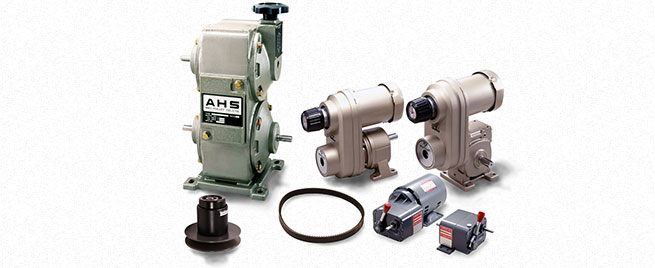
The stars of our line-up of speed changers and reducers are the variable-speed pulleys that give our firm its name. The speed of devices can be controlled easily by simply changing the pitch diameter of the belt that transmits the power to a belt-driven pulley. Since speed is controlled mechanically, maintenance is simple, power can be reliably transmitted, and speed can be controlled securely. These include units that combine motors and speed reducers, models that use brake motors, and speed reducers that use hollow or solid shaft. These can provide not just speed control, but reliable power transmission under complex control methods.
Hollow-shaft Speed Changers and Reducers
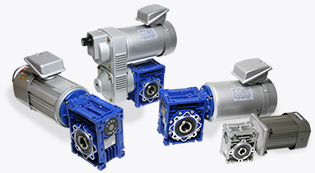
Product model
RW Mini Models | RWM Models | RWM-BS Types | RWP Models
This series uses hollow-shaft worm reducers as central modules that are combined with motors and belt-type stepless speed changers. They use B14 flange motors, so they are very compact.
Solid-shaft Speed Changers and Reducers
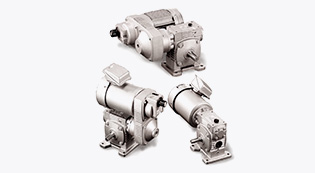
Product model
AXM Models | AXP Models
This series uses solid-shaft worm reducers as central modules that are combined with motors and belt-type stepless speed changers. They use B14 flange motors, so they are very compact.
Belt-type Stepless Speed Changer Units
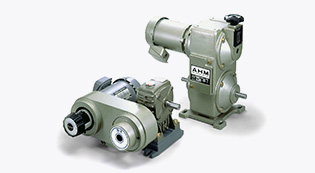
Product model
ANS Models | ANW NHN/PMN Types | ANW NKN Types | ANG GDN Types | ACW Models | ANB Models | PDS Models | PDC Models | PDG BSN Types | AHS Models | AHM Models
These units change speeds without changing the distance between shafts by making the belt pitch diameter of one variable-speed pulley track the belt pitch diameter of another variable-speed pulley when its belt pitch diameter is changed. Since speed can be changed without changing the distance between shafts, more compact designs are possible, mounting is simple, and ease of use is exceptional.
Speed Changer Belts
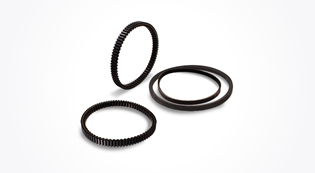
Product model
Wide speed-changer belts | Double cog belts | Standard V belts
There are three types of belts we use in our belt-type stepless speed changers: wide speed-change belts, double cog belts, and standard V belts. You can select the belt that is best for your particular speed changer.
Stand-alone, Belt-type Stepless Speed Changers
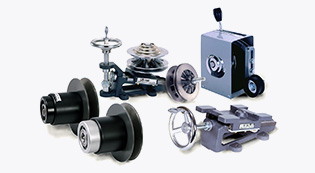
Product model
P Models (Single-type variable-pitch pulleys) | AP Models (single-type variable-pitch pulleys) | PL Models (Single-type variable-pitch pulleys) | PK Models (Single-type variable-pitch pulleys) | PF Models (Single-type variable-pitch pulleys) | R/RK/RH Models (Motor Slide Bases) | L Models (Intermediate gear pulleys) | U Models (Intermediate gear pulleys) | T Models (Intermediate gear pulleys)
Our belt-type stepless speed changers that can continuously vary their speed of rotation without stopping the machinery include VARI-DIA pulleys and intermediate gear pulleys. They are derived from our unique technology developed over long years of experience. They can be easily mounted on any type of machinery or equipment, and dramatically improve working efficiency.
Zero-Max Stepless Speed Changers
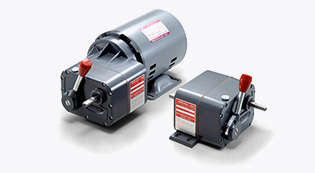
Product model
S Models | MS Models
These are one-way clutch-type stepless speed changers that instantly go from zero to maximum RPM. To change speed, simply operate the very responsive speed-change lever. The speed change ratio is a high 1:12, and there are no restrictions on mounting direction.
DC Motors
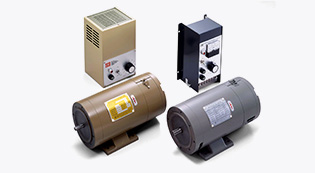
Product model
SCD Series | SYD Series
These are stepless variable motors using static Ward Leonard control that combine separately excited DC motors (ideal for continuous speed variation) with SCR controllers that can control the motor using tiny electrical signals of just a few mA.






